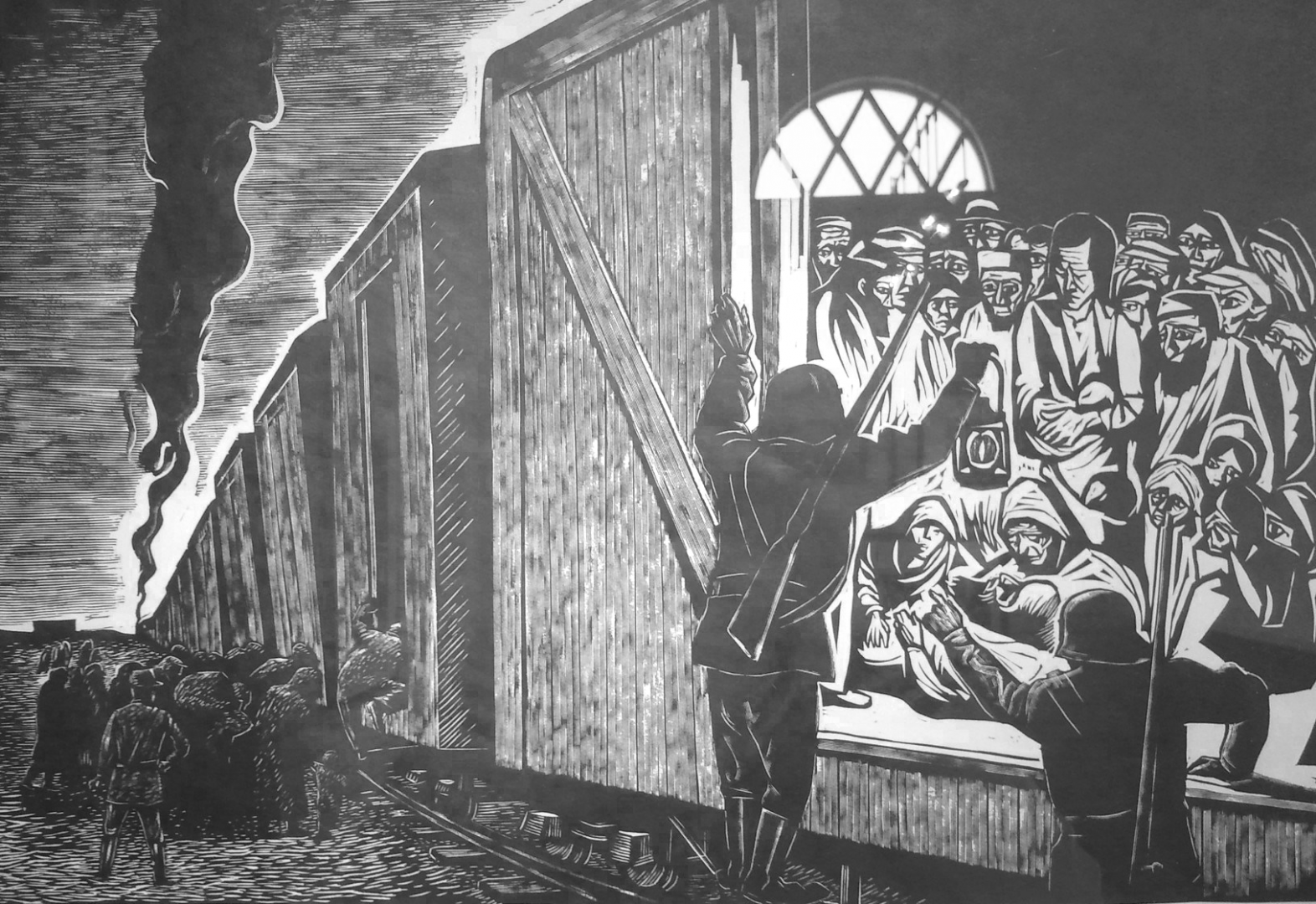Questions
What if you
rock the memories,
and hear
how much they wanted to live?
What if you
rock the echoes of the past?
How did people differ then?
By faith, by dreams?
Some ate bread from the oven –
I did not –
I think I did not like to.
Tell me, grandfather,
why, to take a bath,
were they going by train?
I don't know –
I don't think I remember.
--tr. Artur Komoter

During World War II the Nazis transported millions of Jews, Poles, Roma, and others from throughout occupied Europe to various death camps. About a million of them were given deadly "showers" of Zyklon B ("Cyclone B"), a pesticide using hydrogen cyanide (prussic acid). During World War I an earlier Zyklon product was used as a chemical weapon and subsequently banned, but after the war a Degussa GmbH (an acronym of Deutsche Gold- und Silber-Scheide-Anstalt -- German Gold and Silver Separating Works) research team led by Bruno Tesch discovered a process in which the hydrogen cyanide could be manufactured and used in a solid form and developed a method of packaging hydrogen cyanide in sealed canisters. According to Auschwitz commandant Rudolf Höss, it was 1st used to kill some Russian POWs in late August 1941 in the basement of Block 11 in the main camp, but the site was difficult to air out afterwards, so the project was moved to Crematorium I, which was some distance away and could handle more than 700 victims at a time. The 1st gas chamber, Bunker 1, a brick cottage converted to a gassing facility by tearing out the inside and bricking up the windows, was operational by March 1942 and could exterminate 800 victims, and was followed a few weeks later bt Bunker 2, which held 1,200. To increase capacity, in early 1943 Crematorium II, originally designed as a mortuary, with morgues in the basement and ground-level incinerators, was converted into a killing factory by installing gas-tight doors, vents for the Zyklon B to be dropped into the chamber, and ventilation equipment to remove the gas afterwards. Crematorium III was built using the same design, and Crematoria IV and V were designed from the start as gassing centers; all 4 were operational by June 1943. The large-scale shipment of large numbers of victims began in mid-1942 About 3/4 of the total, those not selected for work crews, were immediately gassed upon arrival; most of them were children, women with small children, the elderly, and all those not regarded as physically fit. They were told they were to undergo delousing and a shower, stripped of their belongings, and herded into the gas chambers. A special SS bureau, known as the Hygienic Institute, delived the Zyklon B in ambulances, and a supervising SS doctor presided over tge operation. After the doors were shut, SS men dumped the pellets through vents in the roof or holes in the side of the chamber. It took about 20 minutes to exterminate the lot, but their screams could be heard through the openings. Corpses were found half-squatting, their skin discolored pink with red and green spots, and sometimes were found foaming from their mouths or bleeding from their ears. The victims' glasses, artificial limbs, jewelry, and hair were removed, and any dental work was extracted so the gold could be melted down. Other inmates removed the bodies, which were then burned, and the ashes were buried, thrown in the river, or used as fertilizer. At the end of the war Tesch was interrogated by Captain Walter Freud, a chemist who was Sigmund Freud's grandson, charged with knowingly supplying poison gas "for the extermination of allied nationals interned in concentration camps," tried by a British military tribunal, and hanged in 1946.
ReplyDelete